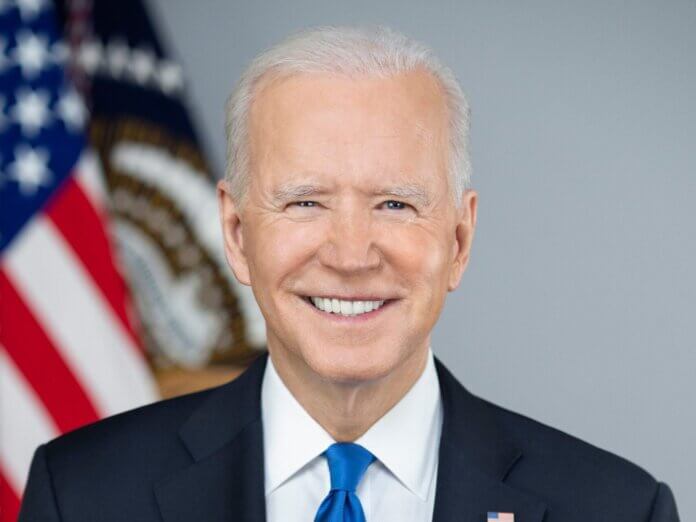The President has determined that the safeguard action on imports of crystalline silicon photovoltaic (CSPV) cells, whether or not partially or fully assembled into other products, continues to be necessary to prevent or remedy the serious injury to the domestic industry, and that there is evidence that the domestic industry is making a positive adjustment to import competition.
He extended the safeguard measure proclaimed in Proclamation 9693 with modifications, including continuation of the tariff-rate quota (TRQ) on imports of solar cells not partially or fully assembled into other products for an additional period of four years, with unchanging within-quota quantities of 5 GW for each year and annual reductions in the rates of duty applicable to goods entered in excess of those quantities of cells in the fifth, sixth, seventh and eighth years, as described in Annex I to this proclamation. There is a continuation of the increase in duties on imports of modules for an additional period of 4 years, with annual reductions in the fifth, sixth, seventh, and eighth years as well as an exclusion of bifacial panels from the extension of duties proclaimed in this paragraph.
“While we are disappointed with the decision to extend Section 201 tariffs on imported solar cells and panels, we are grateful to the Biden administration for clearly considering the range of issues affected by this decision,” states Abigail Ross Hopper, president and CEO of the Solar Energy Industries Association (SEIA). “Administration officials arrived at a balanced solution in upholding the exclusion for bifacial panels and increasing the tariff rate quota for cells.
“SEIA has been fighting for more than three years to preserve the exclusion for bifacial panels, a product not available in the United States at scale,” Hopper adds. “Today’s decision recognizes the importance of this innovative technology in helping to improve power output and lower costs in the utility-scale segment. It is a massive step forward in producing clean energy in America and in tackling climate change. We also support the administration’s decision to increase the tariff rate quota for solar cell imports. This will benefit both domestic module manufacturers and their customers in the residential, and commercial and industrial segments.
“As the nation’s leading voice for clean energy project development, we applaud President Biden’s decision today on a crucial issue facing the solar industry: Section 201 tariffs,” comments American Clean Power Association CEO Heather Zichal. “The decision to extend the 201 exclusion for bifacial modules is a win for jobs and a win for the President’s climate agenda. The President’s decision to extend the tariffs, applicable to monofacial solar cells and modules, gives the domestic solar manufacturing industry four more years to adjust to import competition as intended by the statute.”
As part of the tariff’s history, in January 2018, the President issued Proclamation 9693, imposing a safeguard measure for a period of four years that included both a TRQ on imports of certain CSPV cells, not partially or fully assembled into other products, provided for in subheading. In addition, there was an increase in duties (safeguard tariff) on imports of CSPV cells exceeding the TRQ and all imports of other CSPV product. Proclamation 9693 exempted imports from certain designated beneficiary countries under the Generalized System of Preferences from the application of the safeguard measure.
Effective June 13, 2019, the USTR excluded bifacial solar panels that absorb light and generate electricity on each side of the panel and that consist of only bifacial solar cells that absorb light and generate electricity on both sides of the cells (bifacial modules).
On October 10, 2020, the President issued Proclamation 10101, in which he determined that the domestic industry has begun to make a positive adjustment to import competition, as shown by the increases in domestic module production capacity, production, and market share. It also revoked the exclusion of bifacial modules from application of the safeguard measure on the basis that it had impaired and was likely to continue to impair the effectiveness of the safeguard action. In addition, it adjusted the safeguard tariff for the fourth year of the safeguard measure from 15% to 18% on the basis that the exclusion of bifacial modules from application of the safeguard tariffs had impaired the remedial effectiveness of the 4-year action proclaimed in Proclamation 9693, and to achieve the full remedial effect envisaged in that action.
The United States Court of International Trade then held up on November 16, 2021 in Solar Energy Industries Association et al. v. United States (SEIA) that the President acted outside of his statutory authority in issuing Proclamation 10101, and enjoined the government from enforcing that proclamation. This injunction had the effect of reinstating the exclusion of bifacial modules from the safeguard tariffs and lowering the fourth-year safeguard tariff to 15%. On January 14, 2022, the Government filed a notice of appeal of SEIA to the United States Court of Appeals for the Federal Circuit.
Read the full Proclamation here.


